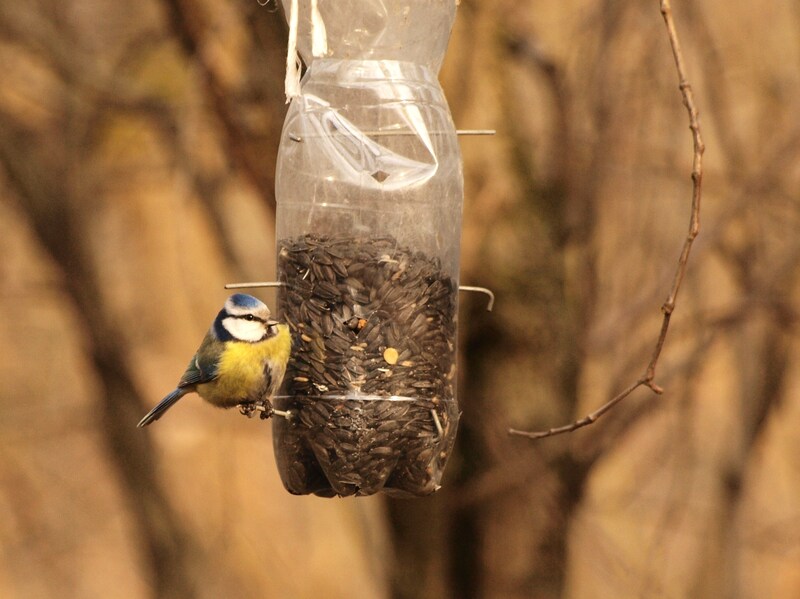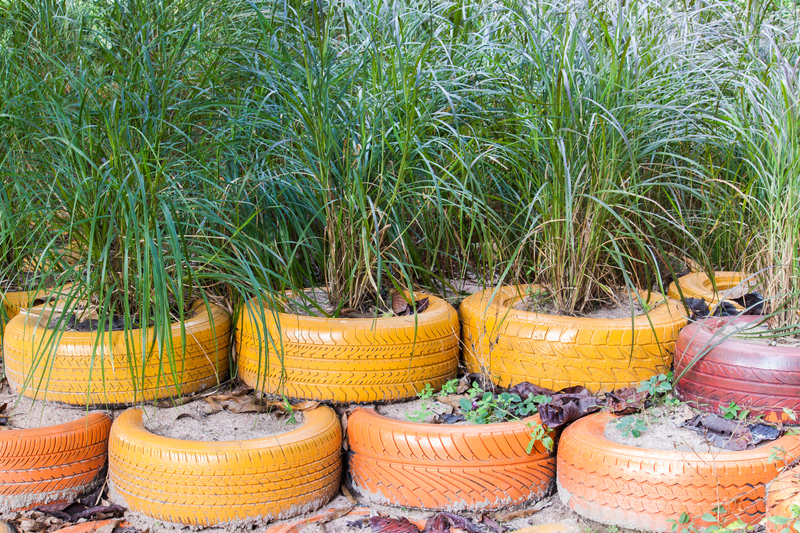How to Protect Nature While Disposing of PPE Waste
The global use of Personal Protective Equipment (PPE) has skyrocketed due to public health concerns and industrial safety protocols. However, the proper disposal of PPE waste brings an environmental challenge. Millions of masks, gloves, gowns, and face shields are ending up in landfills, waterways, and natural habitats every day. In this comprehensive article, we will explore how to protect nature while disposing of PPE waste, with eco-friendly tips, best practices, and expert advice.
Understanding the Impact of PPE Waste on the Environment
Before exploring sustainable disposal methods, it's important to recognize the environmental problems caused by PPE trash. When PPE items are not disposed of responsibly, they pose a threat to ecosystem health and contribute to pollution in several ways:
- Non-biodegradable materials: Most PPE is made from plastics, such as polypropylene, which can take centuries to break down.
- Wildlife endangerment: Discarded masks and gloves are frequently ingested by animals or entangle birds and marine life.
- Microplastic pollution: Over time, sun and water break down PPE into microplastics, contaminating soils and waters.
- Increase in landfill waste: PPE adds significant volume to landfills, accelerating the already critical waste management issue worldwide.
With such adverse effects, adopting conscious strategies for PPE waste management becomes crucial.

Essential Guidelines for Environmentally Friendly PPE Disposal
You can make a real difference by following safe and effective methods to dispose of PPE. These guidelines are beneficial for individuals, business owners, and communities.
1. Never Litter PPE in Public or Natural Areas
The first step in protecting nature when disposing of PPE waste is to avoid littering. Tossing masks, gloves, or face shields in streets, parks, forests, or waterways increases the risk of pollution and wildlife harm. Always keep a spare bag or pocket for your used PPE when outdoors until you can discard it properly.
2. Proper Segregation of PPE Waste from General Trash
PPE waste may contain biological contaminants dangerous to sanitation workers and the environment. To ensure safety and effective handling:
- Use a separate trash bag for PPE items like masks and gloves.
- Seal the bag tightly before disposal to prevent items from escaping into nature.
- Clearly mark the bag as PPE waste if your municipal system supports special handling.
*Some local councils offer specific disposal points for PPE to prevent contamination and litter. Always check with your area's regulations.*
3. Support PPE Recycling Programs
While most PPE is currently hard to recycle due to mixed materials and contamination, PPE recycling initiatives are growing. Several companies and non-profit organizations have started to collect and recycle used PPE:
- Check for local drop-off points: Pharmacies, supermarkets, and community centers may offer PPE recycling bins.
- Support mail-back programs: Some businesses provide prepaid envelopes to mail used PPE for proper recycling or energy recovery.
- Spread awareness: Inform friends, family, and coworkers about available recycling options for eco-friendly PPE disposal.
Investing in research and supporting companies developing biodegradable or recyclable PPE can also significantly reduce the long-term burden on nature.
4. Choose Reusable PPE Where Possible
Reusable masks and face shields are a viable option, especially for the general public in non-healthcare settings. By selecting washable and durable alternatives over disposable options, you cut down on PPE waste generation. If you opt for cloth masks:
- Wash them properly after every use.
- Avoid masks with plastic filters that can't be removed or recycled.
- Properly dispose of worn-out cloth PPE by checking fabric recycling programs in your area.
*Note: Healthcare professionals should follow workplace guidelines for medical PPE, which may require single-use protection.*
5. Organize Community Cleanups and Educational Campaigns
One of the most effective ways to protect nature from PPE litter is through community effort. Organize local cleanup events targeting parks, beaches, and urban spots with visible PPE waste. Additionally, educational drives in schools and public places can raise awareness about responsible PPE disposal. Use creative methods, such as posters, social media, and workshops, to inspire action.
6. Advocate for Policy Change and Corporate Responsibility
Citizen advocacy plays a key role in driving systemic change. Support policies and initiatives that:
- Promote research into sustainable PPE materials and recycling technologies.
- Mandate clear labeling and disposal instructions on all PPE packaging.
- Encourage businesses to adopt eco-friendly PPE procurement and disposal practices.
The more voices that demand environmentally responsible solutions, the closer we move to a future with less PPE pollution.
Best Practices for Businesses in PPE Waste Management
Large-scale workplaces and businesses often generate higher volumes of PPE waste. Implementing structured protocols can significantly reduce environmental harm:
- On-site disposal stations: Provide accessible containers specifically for PPE at exit points, changing areas, and common spaces. Ensure these bins are regularly emptied and cleaned.
- Collaboration with certified waste handlers: Partner with companies specializing in medical or hazardous waste to process and treat PPE in compliance with environmental standards.
- Employee training: Conduct regular sessions on the correct use, removal, and disposal of PPE to minimize contamination risks.
Innovative Solutions for Sustainable PPE
As concerns over single-use PPE mount, the scientific and manufacturing communities are innovating greener alternatives. Here are some promising trends to support nature conservation during PPE disposal:
Biodegradable PPE Products
Research in eco-plastics and plant-based materials has resulted in biodegradable masks and gloves made from corn fiber, bamboo, or other sustainable resources. These naturally break down much faster and with less ecological impact than conventional PPE. Look for certified compostable PPE to further lower your environmental footprint.
Thermal Treatment and Waste-to-Energy
Some municipalities use incineration or advanced thermal treatments to convert contaminated PPE waste into energy. When managed correctly, these systems destroy pathogens while limiting harmful emissions. Enquire if your city uses waste-to-energy processing for PPE, which can turn medical waste into electricity or heating.
Decentralized Recycling Technologies
Compact recycling units that can sterilize and process PPE waste directly at hospitals, airports, or large companies are being developed. This minimizes the need for long-haul transport and lowers the risk of spillage en route to waste facilities.
The Role of Individuals: Small Actions, Big Impact
While industry, government, and technology play a vital role, the habits of individuals drive real change in nature-friendly PPE disposal. Here are simple daily steps you can take:
- Educate yourself and others about local PPE disposal rules.
- Minimize your use of single-use PPE when medical-grade is not required.
- Participate in local cleanup events to remove PPE litter from natural places.
- Encourage family and friends to follow eco-friendly PPE disposal habits.

Frequently Asked Questions About Eco-Friendly PPE Disposal
Can I recycle disposable masks and gloves?
Not in regular home recycling bins. Most curbside programs don't accept PPE due to contamination risk and the mixed material composition. Look for special PPE recycling drop-off points or mail-back schemes.
What's the safest way to dispose of used PPE at home?
Place PPE in a separate plastic bag, seal it, and put it in the general waste bin. Avoid flushing masks or gloves down toilets as this can block pipes and harm aquatic life.
How can businesses reduce their PPE waste?
Encourage the use of reusable PPE when safe, implement collection bins, work with specialized waste contractors, and educate staff on responsible disposal.
Are biodegradable PPE and compostable PPE the same?
No. Biodegradable PPE breaks down naturally over time (but should not go in food or garden compost unless certified). Compostable PPE can safely be composted in industrial facilities.
Conclusion: A Shared Responsibility for a Cleaner Planet
The unprecedented need for PPE should not come at the expense of our environment. By adopting responsible habits, supporting policy and innovation, and spreading awareness, we can all play a role in minimizing the environmental footprint of PPE waste. Remember, every action--no matter how small--contributes to a healthier planet for generations to come.
Let us all commit to protecting nature while disposing of PPE waste by embracing best practices, sustainable choices, and active stewardship of our natural resources.
